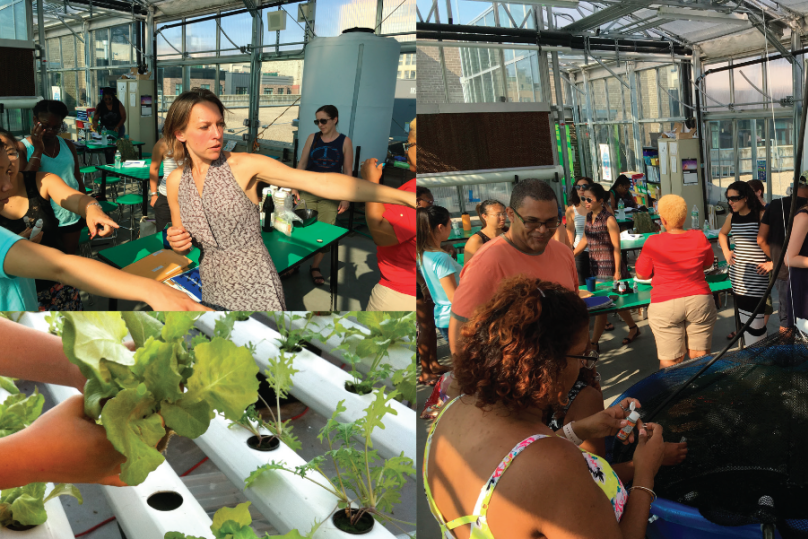
How MƒA helps Shakira Provasoli confront the urgent need for climate education in schools.
MƒA Master Teacher Shakira Provasoli is always searching for effective ways to educate students about climate change. “If we don't require that our students learn about the present and their future, then we're really doing them a disservice,” she says. “Students can only make a positive impact on the environment if they’re equipped with tools and resources from every teacher, in every classroom.”
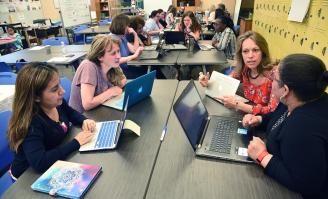
As a longtime teacher of environmental science to K-5 students at P.S. 333 Manhattan School for Children, Provasoli had a lightbulb moment during an MƒA workshop she took in 2019 called “Climate Change Adaptation in NYC.” Participants examined environmental and health data compiled on the NYC.gov website, which clearly showed the incidence of heat-related deaths was higher in certain neighborhoods in the Bronx than anywhere else.
“I had been wanting to teach my students about environmental racism, but I didn't know how to start,” Provasoli recalls. She was astounded by the simplicity of showing the maps and other data, and letting students come to their own conclusions about what they showed. “I thought — wow, I can really use this information to change the way that my students are learning.”
Provasoli put what she learned into practice in different ways for the different grade levels she teaches. With fifth graders, she talked about how to read maps and went over socioeconomic data for different neighborhoods. “We circled those areas, and then we looked at the heat maps,” Provasoli explains. “When it came to looking at areas that have the highest temperatures every year in the summer, everybody could see that right away. It was the first time I was actually able to teach about environmental racism and everybody understood it.”
With second graders, Provasoli drew on what she had learned in the workshop about how the city had tried to mitigate the effects of climate change by both planting more trees and painting the roofs of buildings in hotter neighborhoods light colors, like white or silver. During a unit on urban gardening, she had the students choose a type of garden to build a model of and teach people about. “I wanted every group to find a way for an area of their garden to have a lower temperature,” she says. “We used infrared thermometers to test the temperature differences between light and dark roofs.” When the same students worked with thermometers as part of her third-grade curriculum, they already knew how to use them, and were even more engaged with the work.
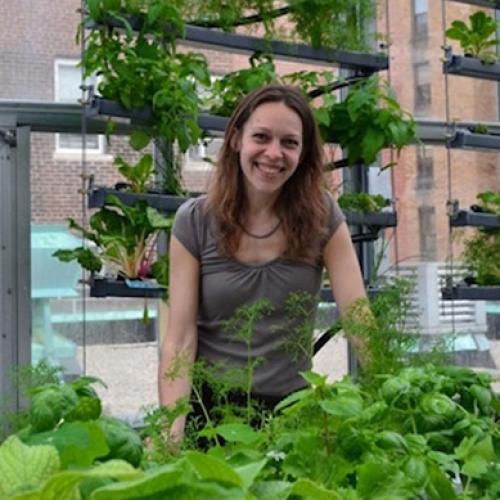
The hydroponic growing space atop West 93rd Street’s P.S. 333. Shakira was honored with the Presidential Innovation Award for Environmental Educators in recognition of curriculum developed to support her school’s greenhouse learning center.
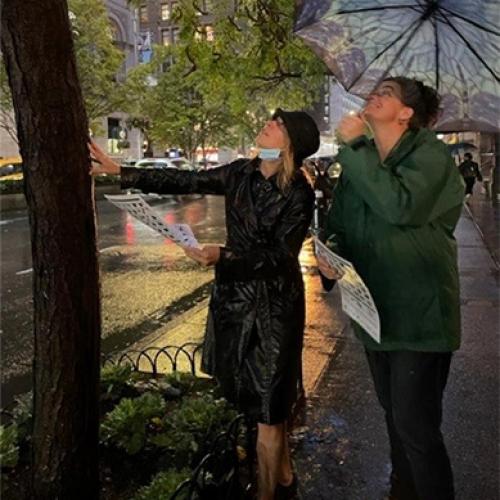
Shakira and fellow MƒA Master Teacher Allison Godshall participating in the "Teaching Trees: Where Ecology Meets Equity" mini-course, learning how trees impact the lives and well-being of New Yorkers.
Provasoli also showed the same data and maps to teachers in a course she offers through the NYC Department of Education’s After School Professional Development Program, during a discussion of environmental racism. “It's so much richer to form your own conclusions, and to have people that you can talk to about them,” she says of the experience, adding that some of the teachers in her course have introduced the maps into their own classrooms.
Provasoli has found community and inspiration in other MƒA offerings, such as the Sustainability Interest Group, where she connected with teachers who are passionate about the same issues. From that group, she learned about the DOE Office of Sustainability’s SEED certification program, and enlisted students, teachers and parents in the effort to make their school more sustainable. The group also introduced Provasoli to the Climate Education Resiliency Task Force sponsored by the National Wildlife Federation. She’s now a member of the group, which works to get mandates for climate education in New York State and especially in New York City.
“Students can only make a positive impact on the environment if they’re equipped with tools and resources from every teacher, in every classroom.”
Seeking to spread the message about climate education even further among her MƒA colleagues, Provasoli began co-facilitating a Professional Learning Team (PLT) called “Getting Kids to Care About Climate Change” with fellow MƒA Master Teacher Adam Zaid. Like the Sustainability Interest Group, the PLT brings together teachers who are motivated to teach about climate, and provides a more structured environment for them. “There's time for teachers to collaborate, listen to speakers, read interesting articles and work together to plan out classroom projects,” Provasoli says.
Beyond furthering her climate education mission, Provasoli relies on MƒA to help stay as excited about teaching now as she was when she walked into her first classroom more than 23 years ago. “MƒA soothes my soul in the sense that I always need to be trying new things, meeting new people, pushing myself and learning all the time,” she says. “At MƒA, I don't have to hide the fact that I geek out over something. People are supposed to geek out.”
Additional Photo Credit: New York Sun Works
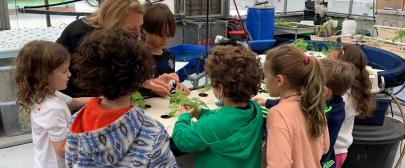
Shakira's second graders measuring the temperature under and around plants on a sunny day.